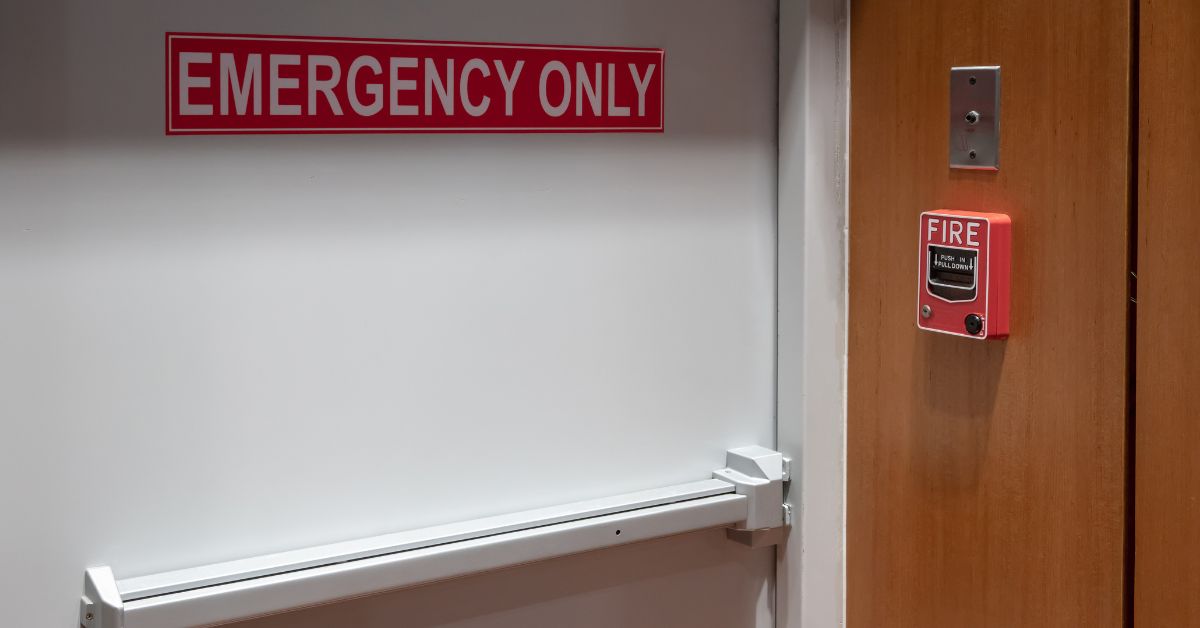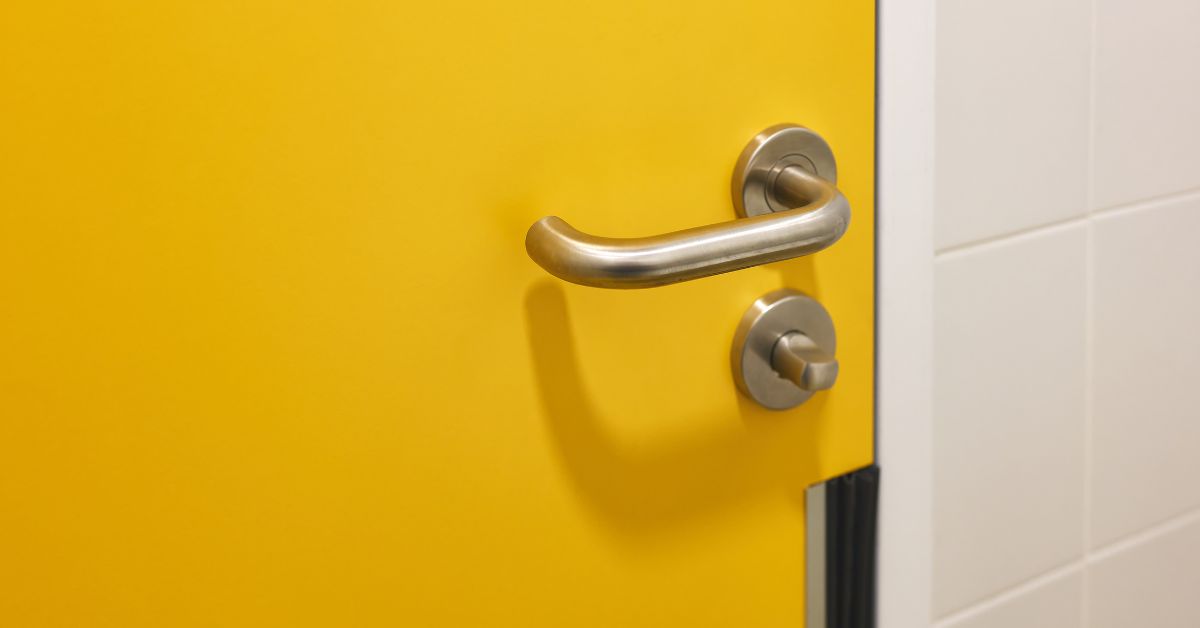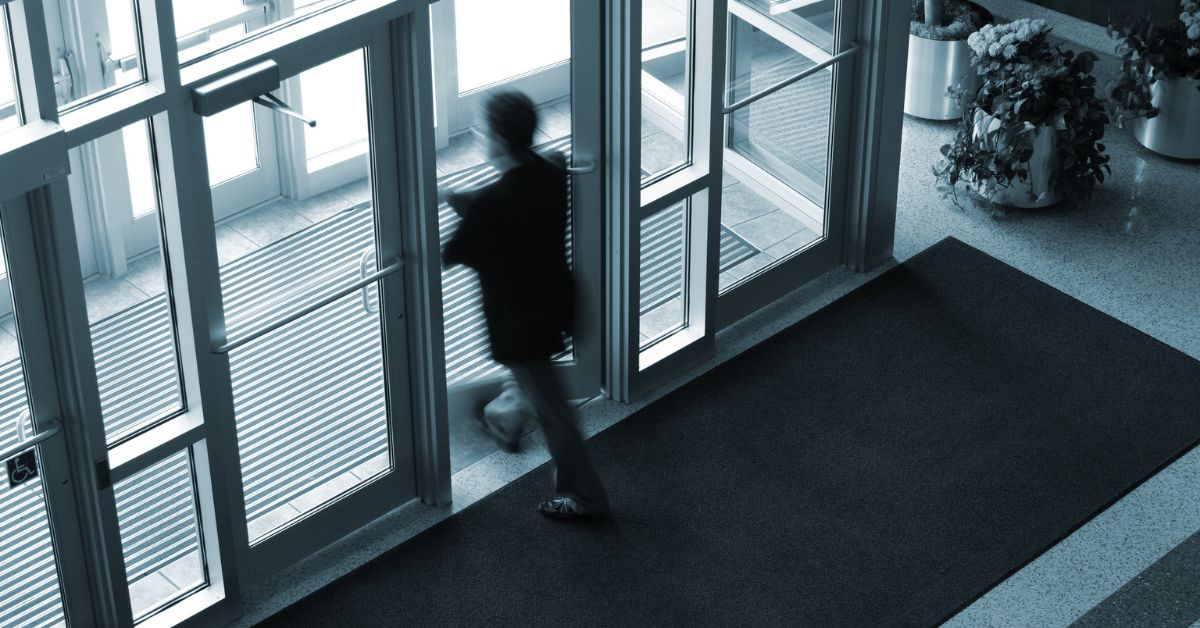A Guide to Choosing the Right Exit Device Hardware

Types of Exit Device Hardware
Selecting the right exit device hardware involves understanding the various options available. Each type offers unique features based on specific environments and applications. Here’s an overview of each option.
Panic Bars
Panic bars (or crash bars) provide a quick and easy exit by pushing a horizontal bar. Their design features a latch mechanism that releases the door when pressed. Panic bars are common in schools, hospitals, and public buildings and cater to high-traffic areas where rapid evacuation is necessary.
Push Pads
Push pads offer a streamlined alternative to panic bars. Unlike their horizontal counterparts, push pads feature a vertical activation mechanism. This design provides a more compact solution for narrow or less-trafficked exits. Ideal for offices and small business environments, they maintain the same level of safety while offering a different aesthetic and application.
Lever Handle Devices
Lever handle devices function through a simple downward motion, providing a familiar interface similar to residential handles. You’ll typically find lever handle devices in buildings with lower foot traffic because they suit environments where aesthetics and functionality align with traditional door hardware.

Vertical Rod Devices
Vertical rod devices engage through a vertical locking mechanism, typically at both the top and bottom of the door. They best suit double doors or exits requiring additional security. These devices ensure robust closure and controlled access in insurance-heavy applications like warehouses and commercial spaces.
Materials and Durability
When you select hardware, the materials you choose play a pivotal role in determining both durability and performance. Stainless steel and aluminum are popular options, each offering distinct advantages.
Stainless steel provides excellent corrosion resistance and robust durability, making it ideal for outdoor or high-humidity environments where these qualities matter most. On the other hand, aluminum’s lightweight nature and cost-effectiveness make it suitable for indoor use.
Durability considerations extend beyond material selection to include factors such as usage frequency and environmental exposure. Outdoor hardware must endure varying weather conditions, while indoor devices may focus more on aesthetics and softer finishes.
Technological Advancements in Exit Hardware
Technological advancements have significantly transformed exit device hardware, introducing smart technology and innovative designs. Smart exit devices now integrate advanced technology, enabling remote monitoring and enhanced security features. These devices provide benefits like real-time alerts for unauthorized access and centralized management of operations, making them an intelligent solution for businesses that prioritize security.
Innovations in design and functionality reflect the latest trends in creating user-friendly features. New designs emphasize intuitive operation, ensuring that everyone, from employees to visitors, can safely and quickly exit during emergencies. Features such as improved grip surfaces and clear signage enhance efficiency and ensure compliance with safety standards, demonstrating a commitment to both innovation and safety.
Considerations for Selecting the Right Hardware
Choosing the right exit device hardware depends on several factors, like building and door specifications, occupant needs, and compliance with safety standards. Let’s dive deeper into different key factors that will influence your decision.
Building and Door Specifications
Understand that different door types, such as hinged, sliding, or revolving, require specific hardware to function correctly. For example, hinged doors may need robust panic bars, while sliding doors might require specialized lock mechanisms.
Ensuring the hardware matches your building’s layout and door specifications prevents compatibility issues and enhances security. By carefully assessing these details, you can choose hardware that seamlessly integrates with your existing structures.
Occupant Needs and Traffic Patterns
Evaluate the needs of the building’s occupants and the typical traffic flow to guide your hardware selection. In high-traffic areas, durable and resilient hardware can withstand constant use and prevent frequent replacements.
Conversely, in quieter zones, you might prioritize aesthetics and choose hardware that complements the interior design. Tailoring your hardware choices to accommodate the specific demands of each area within the building results in improved user satisfaction and functionality.

Compliance With Safety Standards
Adhering to safety standards and certifications is essential when choosing exit device hardware. Familiarize yourself with industry regulations, such as ANSI and UL ratings, to ensure the hardware meets all necessary safety benchmarks.
The American National Standards Institute, or ANSI, sets voluntary safety guidelines to ensure products perform effectively. For exit devices, ANSI focuses on standards that help people exit buildings safely during emergencies and provides clear guidelines on how to construct, test, and maintain these products.
Underwriters Laboratories, or UL, test products to confirm their safety and functionality. When a product earns a UL rating, it signifies that it has passed comprehensive safety checks and can reliably perform without risk. By choosing products with UL certification, you select items that have undergone rigorous evaluation.
Budget Constraints and Cost-Effectiveness
Balancing cost and quality is key when choosing hardware. Investing in high-quality, reliable products may cost more upfront, but it reduces the need for replacements and maintenance over time. Durable hardware boosts safety and lowers expenses in the long run.
Focus on how reliable hardware minimizes failures, ensuring consistent performance and fewer disruptions. This means less frequent repairs and lower maintenance costs, protecting your investment.
To make informed decisions, compare initial costs with potential savings. Consider the total cost of ownership, including maintenance frequency, product lifespan, and potential failure costs. By evaluating these factors, you can select hardware that meets your needs and aligns with long-term financial goals, providing lasting value and satisfaction.
Hardware Supplier
Selecting the right supplier for your exit device hardware ensures safety and reliability. A reputable supplier delivers high-quality products and offers the expertise needed to guide you through the selection and installation processes, ensuring compliance with industry standards.
At DoorHub, we take pride in being your trusted partner on this journey. Our extensive range of exit device options meets diverse requirements, whether you need heavy-duty solutions for high-traffic areas or unique settings.
We commit to unwavering quality and leverage our deep industry knowledge to help you make informed decisions. By choosing DoorHub, you invest in peace of mind, knowing you have dependable solutions that endure.
Final Thoughts
Understanding the specific needs of your building and staying informed about hardware options offers the best chance of selecting the most suitable products. When in doubt, seek expert advice from DoorHub or conduct thorough research to inform your decisions. Investing in the right hardware today secures safer environments for your facility tomorrow.

Author
Greg Richard
Chief Technical Officer and Founding Member of DoorHub.com